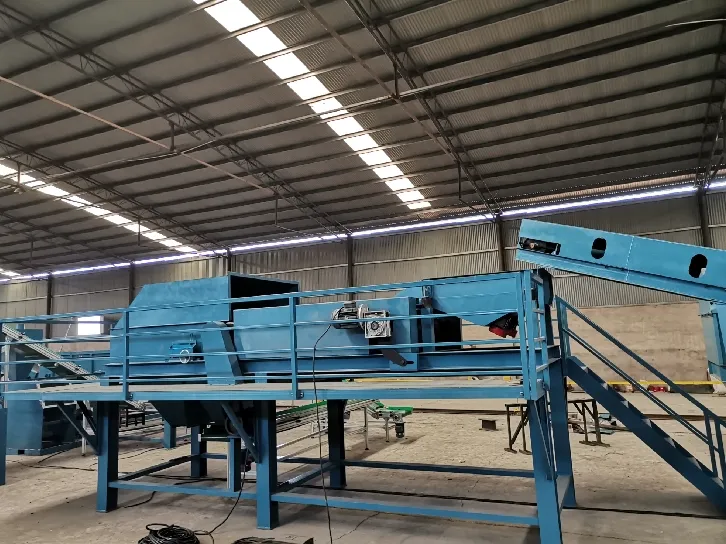

Noy . 20, 2024 14:22 Back to list
What is Shreddable Steel Scrap?
Shreddable steel scrap is a specific category of metal waste that can easily be processed and recycled into new steel products. This type of scrap is characterized by its composition and physical properties, making it ideal for shredding, melting, and remelting in steel manufacturing processes. Understanding the definition, sources, and significance of shreddable steel scrap can contribute to better recycling practices and a more sustainable future.
Definition of Shreddable Steel Scrap
Shreddable steel scrap refers primarily to ferrous materials that can be reduced in size using industrial shredders. These materials typically have a lower density than heavy scrap steel and are often composed of thin sheets or structures, such as automotive body parts, appliances, and various types of machinery. Once processed through shredders, these pieces are broken down into smaller fragments, allowing for easier transportation, handling, and further processing in steel mills.
The shredding process is crucial because it not only facilitates the recycling of materials but also enhances the efficiency of metal recovery. By breaking down larger items into smaller particles, shreddable steel scrap can be melted down and reformed with greater ease, ensuring that a higher percentage of the material is recycled compared to larger, more unwieldy pieces.
Sources of Shreddable Steel Scrap
Shreddable steel scrap can originate from various sectors, including automotive, construction, manufacturing, and consumer goods
. Here are some common sources1. Automotive Industry Old vehicles are a significant source of shreddable steel scrap. When cars are dismantled, components such as doors, hoods, and non-structural parts can be shredded and recycled.
2. Household Appliances Common appliances such as refrigerators, washing machines, and microwaves contain considerable amounts of steel, especially in their frames and outer shells. When these items reach end-of-life, they become an excellent source of shreddable steel.

3. Construction and Demolition During construction projects, many structural and non-structural materials made from steel are generated. Waste from demolished buildings, including steel beams, girders, and fixtures, can be shredded and reused in the steel production process.
4. Manufacturing Scrap Within manufacturing facilities, off-cuts, trimmings, and defective products often consist of shreddable steel. This scrap metal is routinely collected and sent for recycling.
Importance of Shreddable Steel Scrap
The recycling of shreddable steel scrap offers numerous environmental and economic benefits. One of the key advantages is the reduction of natural resource consumption. By recycling steel scrap, manufacturers diminish their reliance on virgin materials, such as iron ore, thereby conserving natural resources and minimizing the environmental impact associated with mining.
Moreover, recycling steel scrap is significantly less energy-intensive than producing steel from raw materials. Melting down shredded scrap requires approximately 75% less energy compared to processing iron ore. This energy efficiency translates into reduced greenhouse gas emissions, contributing to efforts against climate change.
In addition to environmental benefits, shreddable steel scrap also plays a vital role in the economy. The steel recycling industry generates billions of dollars in revenue each year and creates thousands of jobs in sorting, processing, and transporting metal waste. Facilitating efficient recycling practices through shreddable steel scrap can contribute to a circular economy where materials are continuously reused and recycled.
Conclusion
Shreddable steel scrap is an essential component of the recycling industry, characterized by its efficient processing and valuable contribution to sustainable steel production. With its origins in various sectors and significant environmental and economic benefits, understanding and promoting the recycling of shreddable steel scrap is vital in our pursuit of sustainability. By embracing efficient shredding and recycling practices, we can not only reduce waste but also foster a more sustainable society focused on minimizing resource consumption and protecting our planet for future generations.
Latest news
Troubleshooting Common Eddy Separator Problems
NewsJul.04,2025
The Role of Metal Recycling Plants in Circular Economy
NewsJul.04,2025
The Impact of Recycling Line Pickers on Waste Management Costs
NewsJul.04,2025
Safety Features Every Metal Shredder Should Have
NewsJul.04,2025
How Industrial Shredders Improve Waste Management Systems
NewsJul.04,2025
How Cable Granulators Contribute to Sustainable Recycling
NewsJul.04,2025